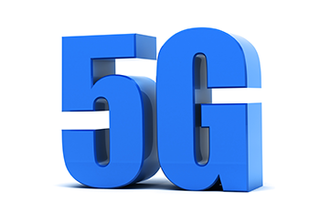AT&T Plans DirecTV Now Over 5G in Austin

NEW YORK—AT&T is gearing up for a trial to deliver DirecTV Now in Austin via 5G wireless broadband in the first half of 2017. The cell network giant said it also planned to test “additional next-generation entertainment services of fixed 5G connections.” AT&T said the trial will comprise multiple sites and devices and focus on how fixed wireless millimeter wave technology handles heavy video traffic.
AT&T laid out its 5G strategy for the year earlier this month and said that in initial lab trials, they had achieved 14 Gbps with less than 3 milliseconds of latency, under the “industry expectation” of 5 milliseconds. It said that continued development of 4G LTE was integral to “laying the foundation” for 5G, or fifth-generation cellular transmission technology.The provider said it expected to reach “peak theoretical speeds” of 1 Gbps at some 4G LTE cell sites this year, and planned to deploy more small cell nodes and carrier aggregation, a method said to increase peak data speeds.
“We’re currently deploying three-way carrier aggregation in select areas, and plan to introduce four-way carrier aggregation as well as LTE-License Assisted Access this year,” the carrier said on its 5G progress website.
The DirecTV experiment in Austin comes after AT&T said it conducted its first 5G business trial there last fall Intel and Ericsson using millimeter wave technology over unlicensed spectrum, and achieving 1 Gbps up- and downloads in the first phase. Additional mobile and fixed 5G trials are planned for this year in conjunction with Ericsson and Qualcomm.
“These trials are significant because they will be our first trials to use what we expect to be based upon the 5G New Radio specification being developed by the industry technology standards group 3GPP. Industry standards are important to enabling wide-scale 5G commercialization. The trials will test both mobile and fixed wireless solutions operating in mmWave spectrum accelerating commercial deployments in the 28 Ghz and 39 Ghz bands. (See “FCC Opens High Frequencies to Phone Companies,” July 14, 2016) They will showcase new 5G radio mmWave technologies for increasing network capacity while achieving multi-gigabit data rates.”
In October 2016, AT&T announced a “multi-dwelling unit fixed wireless point-to-point mmWave trial in Minneapolis,” to reach customers outside of its 21-state wireline area, and it planned on “exploring additional markets for trial locations.”
In the wired world, AT&T said it was delivering 100 percent fiber-carried 1 Gbps (more like 940 Mbps with overhead) to “nearly 4 million locations across 46 metros nationwide,” and that by mid-2019, it planned on having “at least 12.5 million locations across 67 metro areas with our 100 percent fiber network.”
The carrier noted that is also hasn't thrown in the towel on copper, and that it continues to conduct g.fast experiments, notably in a multi-dwelling unit, also in Minneapolis. G.fasttechnology is said to enable fiber speeds over existing copper lines. AT&T said it planned more g.fast deployments this year where it still has copper lines.
Also see...
November 11, 2016
Facebook Does 20 Gbps Millimeter-Wave Broadband
November 1, 2016
CenturyLink Cuts Copper in 15 States (for more on g.fast)
September 6, 2016
McAdams On: 5G Streaming
July 14, 2016
FCC Opens High Frequencies to Phone Companies
November 18, 2015
Ericsson: 5G Mobile Subs to Hit 150 Million by 2021
January 26, 2015
FCC Comments Urge Allocation of Spectrum Above 24 GHz for 5G And More
January 26, 2015
Ofcom Consults on 5G Mobile Technology for the U.K.
December 5, 2014
IBM, Ericsson Collaborate on 5G Antenna Designs
November 24, 2014
ZTE and China Mobile Test World's First 'Pre-5G' Massive MIMO Base Station
November 24, 2014
Millimeter Wavelength Radios, Advanced Laser Technology Provide Gigabit/second Links
September 22, 2014
Xilinx, China Mobile Research Institute Partner on Virtualized 5G Network
July 10, 2014
Ericsson 5G Reaches 5 Gbps
June 12, 2014
Researchers Develop Innovative Solutions for 60 GHz 5G networks
June 6, 2014
Pasternack Releases New Line of Millimeter Wave Antennas
May 19, 2014
5G Wireless Trial Planned in 15 GHz Spectrum
May 20, 2013
More Details Emerge on Samsung 28 GHz 5G Wireless Technology
May 20, 2013
Samsung develops adaptive array transceiver for 5G cellular communications
September 20, 2012
FCC to implement PCAST recommendation for 3.5GHz band
November 20, 2009
WCAI looks to 3.65GHz band for wireless broadband
October 24, 2008
Researchers in Singapore Develop New Antenna for Millimeter Bands
March 8, 2005
FCC Modifies Millimeter Band Rules
February 8, 2005
New Process for Millimeter Band Link Registration
October May 2004
FCC Designates Database Managers for Millimeter Wave Spectrum
February 17, 2004
Millimeter Wave Spectrum Reallocated
November 10, 2003
FCC Releases R&O with Service Rules for Millimeter Bands
October 21, 2003
FCC Sets Rules for Millimeter Wave Bands
Get the TV Tech Newsletter
The professional video industry's #1 source for news, trends and product and tech information. Sign up below.
